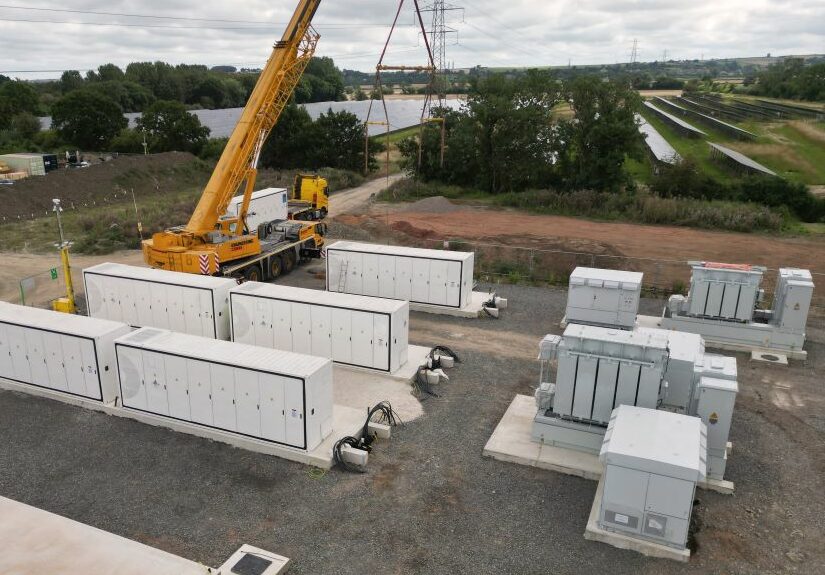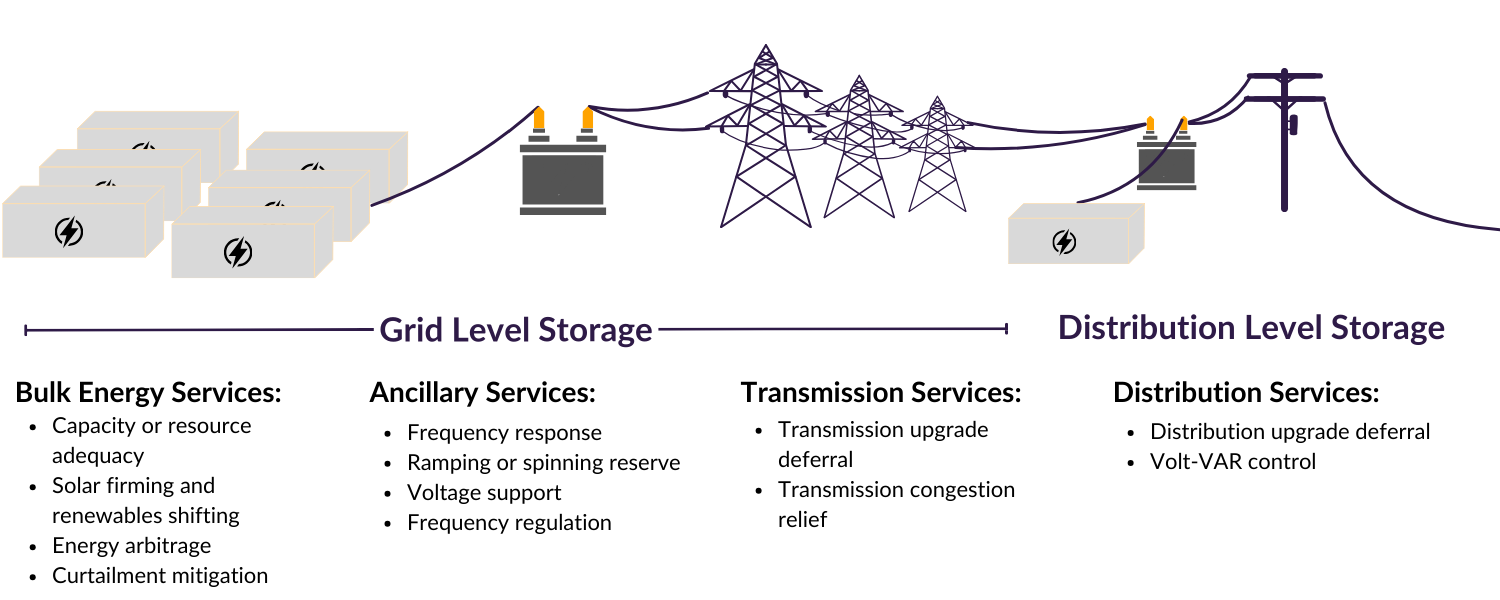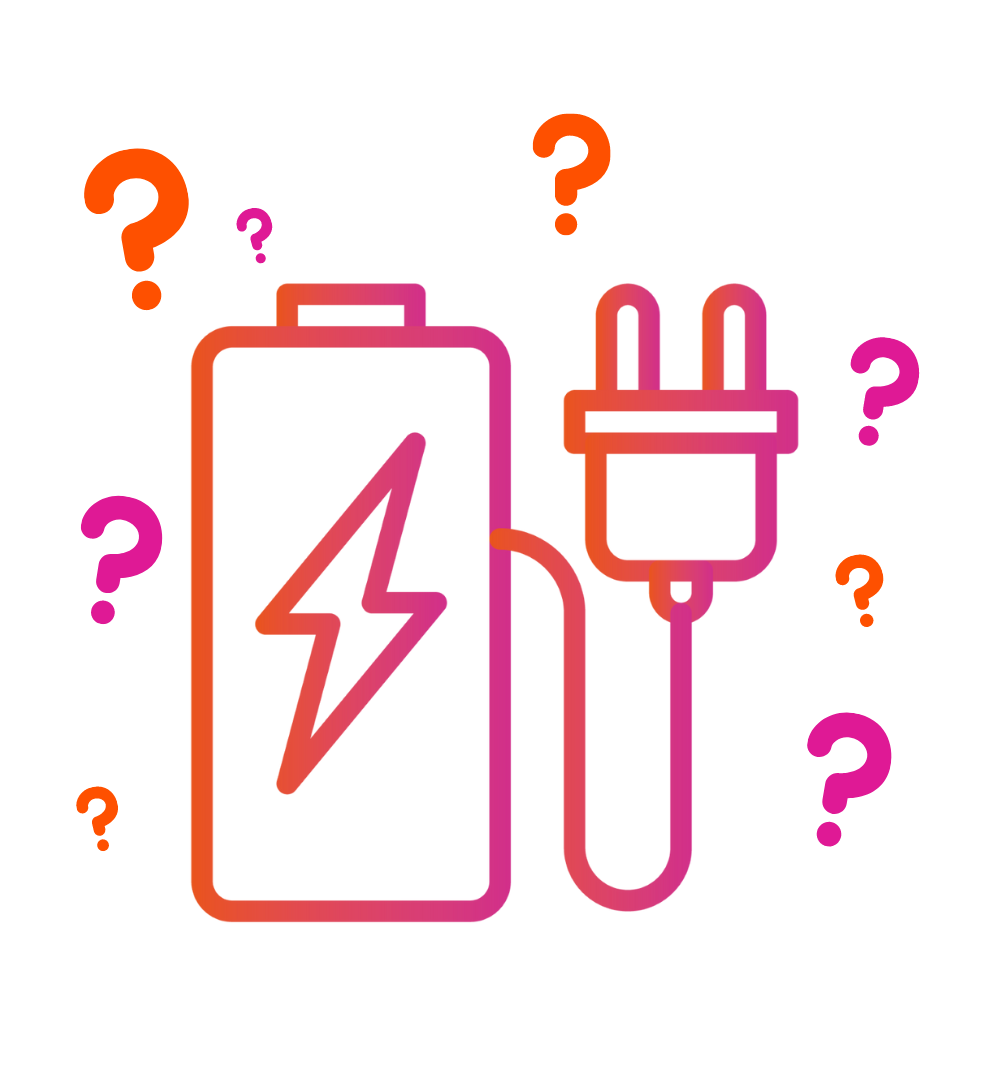Battery Energy Storage Systems (BESS) 101
Lightsource bp is focused on delivering reliable, flexible solutions that meet energy needs around the clock. Energy storage is critical to advancing our resilient energy future.
How do battery energy storage systems work?
Simply put, utility-scale battery storage systems work by storing energy in rechargeable batteries and releasing it into the grid at a later time to deliver electricity or other grid services. Without energy storage, electricity must be produced and consumed at exactly the same time. Energy storage systems allow electricity to be stored—and then discharged—at the most strategic and vital times, and locations.

Co-Located BESS
Co-located energy storage systems are installed alongside renewable generation sources such as solar farms. Co-locating solar and storage improves project efficiency and can often reduce total expenses by sharing balance of system costs across assets. Co-located energy storage systems can be either DC or AC coupled.
- AC coupled configurations are typically used when adding battery storage to existing solar photovoltaic (PV) systems, as they are easier to retrofit. AC coupled systems require an additional inverter to convert the solar electricity from AC back to DC in order to charge batteries. In this configuration, the BESS can act independently from the solar PV system.
- DC coupled systems are more common for new solar PV plus battery installations. DC coupled systems directly charge batteries with the DC power generated by solar PV panels. DC-coupled energy systems unite batteries with a solar farm on the same side of the DC bus.
Standalone BESS
BESS can also store energy from renewable as well as non-renewable sources. Standalone batteries are charged from the electric grid, and are not physically co-located with a solar farm. These independent systems respond to overall grid conditions to provide critical grid level or distribution level services.
Major components of a battery energy storage system

-
Battery modules
The battery modules are the heart of the system, storing energy and dispatching it when needed. A battery is made up of lithium cells, wired together to create a module. The modules are then stacked and combined to form a battery rack.
-
Battery management system (BMS)
The BMS is the brain of the battery rack, which continuously monitors battery health and functionality and ensures safe operation of the battery modules.
-
Storage enclosure
Battery racks are installed within a UL-rated, noncombustible enclosure designed to withstand seismic activity, heavy weather, and high-winds. Enclosures come in different shapes and sizes but are typically smaller than a 40 foot shipping container. Enclosures are typically equipped with a liquid cooled system that uses a combination of chiller and HVAC to keep batteries within certain temperature ranges. If an elevated temperature is reached, the system will automatically be shut down.
-
Power conversion system (PCS)/ bi-directional inverter
Battery systems store and deliver electricity as direct current (DC), while our electric grid and most loads operate on alternating current (AC). The PCS or bi-directional inverter is used to convert DC to AC to discharge batteries and also AC to DC power to charge the batteries.
-
Energy management system (EMS)
The EMS is responsible for controlling and scheduling BESS activity as well as optimizing performance. It will signal the PCS to charge or discharge the battery.
-
SCADA system
SCADA (supervisory control and data acquisition) is a control system that enables monitoring of the battery energy storage system. SCADA focuses on real-time monitoring, control, and data acquisition of the BESS itself, while EMS takes a broader view, optimizing the operation of the entire power system, including the BESS, to ensure efficient and reliable energy management. At Lightsource bp, we ensure the SCADA system is up and running, 24/7, with backup power integrated as an additional safety measure.
Unleashing the advantages and benefits of utility-scale battery energy storage systems
Battery storage creates a smarter, more flexible, and more reliable grid. BESS also plays a pivotal role in the integration of renewable energy sources, such as solar, by mitigating intermittency issues. Storing excess energy during peak production periods ensures a consistent power supply during periods of low renewable generation, enhancing grid resilience and promoting higher renewable energy penetration.

BESS provides a host of valuable services, both for renewable energy and for the grid as a whole
The ability of utility-scale batteries to nimbly draw energy from the grid during certain periods and discharge it to the grid at other periods creates opportunities for electricity dispatch optimization strategies based on system or economic conditions.
Click on each of the tabs below to learn more about BESS services:
Energy / generation services
Utility-scale storage refers to technologies connected to the power grid that can store energy and then supply it back to the grid at a more advantageous time – for example, at night, when no solar power is available, or during a weather event that disrupts electricity generation. Batteries are playing a growing role as they can be installed anywhere in a wide range of capacities.
Capacity or resource adequacy
Energy storage provides additional local and system capacity at the most critical times. Energy storage is widely recognized as a resource capable of supplying firm capacity for utility resource adequacy planning. Battery storage is particularly useful for storing surplus electricity for optimal use and rapid delivery during spikes in energy demand (peak demand). This is especially useful for both energy delivery and price stabilization during elevated temperatures, power outages and unforeseen weather events. Additionally, BESS can provide operating reserve capacity for the grid operators to have available for emergency conditions.
Solar firming and renewables shifting
Solar firming with energy storage uses the asset to “firm” or smooth any gaps that may arise between the solar energy supply and the demand due to weather or time of day.
Energy arbitrage
Because electricity historically could not be stored, electricity prices are usually time-dependent – i.e., they are more expensive during times when people need it most (e.g., a hot summer afternoon) and cheapest when it’s needed least. Energy arbitrage takes advantage of “time of use” electricity pricing by charging an energy storage system when electricity is cheapest and discharging during peak periods, when it is most expensive. Discharging when demand is high increases supply and can also help to ultimately lower costs.
Curtailment mitigation
Battery storage has a key role to play in helping reduce renewable energy curtailment. Energy curtailment is an order by the responsible grid operator for renewable energy facilities to stop producing energy for a specific period of time. It occurs mainly for economic or grid capacity reasons and is caused by a mismatch between supply and demand, i.e. times when electricity production significantly exceeds consumption. Batteries help by storing power when it’s most abundant and/or less expensive and then shifting delivery by discharging that power during peak periods, when it’s more expensive.
Ancillary services
Grid operations require a constant balance between demand and supply to maintain stable and desired frequency and voltage levels. BESS provides grid operators with fast-response capabilities, allowing for ancillary services such as frequency regulation and voltage support. The instantaneous power injection or absorption capability of batteries helps maintain grid stability and improve overall reliability.
Utility-scale battery storage systems are uniquely equipped to deliver a faster response rate to grid signals compared to conventional coal and gas generators. BESS could ramp up or ramp down its capacity from 0% to 100% in matter of seconds and can absorb power from the grid unlike thermal generators.
Frequency response
A common use for batteries is frequency response. Frequency response is a service that maintains grid frequency as close to 60 hertz (Hz) as reasonably possible. Deviations below 60 Hz can lead to protective generator trips that result in a subsequent decline in system stability. Batteries are particularly well suited for frequency regulation because their output does not require any startup time and batteries can quickly absorb surges.
Ramping or spinning reserve
Ramping or spinning reserve is a set of ancillary services in which generators quickly respond to system disruptions, such as a sudden loss of generation or a rapid change in demand.
Transmission and distribution (T&D) services
The power lines on which electricity is transported (transmission and distribution lines) are expensive to build and maintain, and difficult to site. By increasing capacity and resiliency on the grid at the most strategic times and places, intelligently deployed energy storage can avoid or defer the need to build out new T&D architecture.
T&D upgrade deferral
By reducing transmission and distribution losses, BESS improves grid efficiency. The ability to store and dispatch electricity at strategic locations reduces the need for infrastructure upgrades and transmission line losses, optimizing the utilization of existing grid resources.
Safe, responsible, regulated
Safety is a core value and paramount in all that we do at Lightsource bp. We are dedicated to making sure our solar and storage projects are designed, constructed and operated to the highest possible standards, and we take measures to ensure we deliver safe energy storage systems.
Innovation
We take a technology-agnostic approach to our utility-scale energy storage solutions, which allows us to innovate and move with the market to develop the most cost effective and reliable integrated energy products for our customers. Our vendor selection process is rigorous, and we place specific emphasis on responsible business practices along our entire supply chain. Lightsource bp partners with a variety of tier-1 equipment suppliers, integrators and EPCs to deliver safe, reliable, and high performing systems. For each project, we carry out technology and vendor selection via a rigorous prequalification and shortlist process to ensure the best fit solution.

Note: While the information covered here outlines our general best practices for utility-scale energy storage, each battery system and site are unique with bespoke system solutions.


FAQs
Battery energy storage systems (BESS) are essential for America’s energy security and independence, and for the reliability of our electricity supply. But as with any new technology, people may have questions and so we have put together a list of the most asked questions, and their answers, such as:
- How does storage reduce energy costs?
- Are utility-scale battery energy storage systems safe?
- What happens when batteries reach their end of life?
